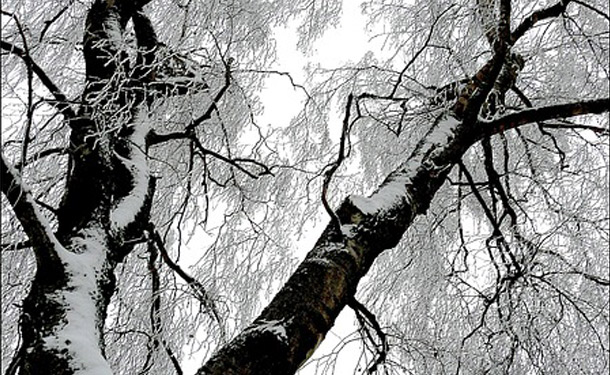Have you ever wondered how trees are able to survive the coldest and harshest weather and come back to life in the spring? In this article, we will take a look at how trees pull it off and learn a little about nature in the process.

What To Do With Trees In The Winter Besides Pruning
Basically, nothing. Trees, for a millennia, have been evolving and adapting to their surroundings and weather patterns. At the onset of cold weather, one of the first signs of dormancy is when a tree’s leaves fall. For those trees, this is the ideal pruning time, as the tree is slowing its energy consumption and will not try to compensate with new growth. So, besides the annual pruning, there isn’t much else to be concerned about. Your tree “knows” what it is doing. To learn more about what you can do to help your trees, visit www.thetreecareguide.com/preparing-trees-for-winter/.
Let’s Discuss What Dormancy Is
Dormancy, in many ways is similar to hibernation. The same way animals slow their bodily functions to dramatically reduce energy consumption, trees stop producing food in the winter months and have no use for the photosynthesis of the leaves. So, to save the energy, the leaves must go. Deciduous trees produce a chemical in its terminal buds (where leaves connect) called abscisic acid (ABA) telling the leaves that it’s time to go.
In both deciduous and coniferous trees, ABA is responsible for the stopping of a tree’s growth. Impeded growth is another attribute of dormancy, reducing even further, the energy consumption of the tree. Now that the tree is in conservation mode, it’s metabolism has also slowed down, utilizing it’s stored food slowly and for vital functions only.
Trees Don’t Entirely Freeze
Even in a low energy, dormant state, trees won’t entirely freeze. Looking much closer, trees prepare for winter on a cellular level. For as incredible as it may seem, part of a tree’s winter survival mechanism happens quietly inside the tree.
By changing the cell membranes to be more pliable, water is allowed to evacuate from the cell to the space between the cells. Thus, the cells shrink, occupying less space and relieving the pressure from the evacuated water.
Starches within the tree are converted to sugar, literally sweetening the liquids within it’s living cells. This process lowers the freezing point of the fluid within the cell, which has already become more pliable. Through this process, living cells neither rupture or are punctured from expanding ice crystals.
Through the previous traits, the tree has a third line of defense at a cellular level. Through cellular dehydration, the cellular liquid becomes viscous, preventing it from crystallizing.
The whole idea here is to keep the tree’s living cells from freezing. As a tree is comprised of and fully utilizes both living and dead cells, the dead cells can and do freeze.
Trees Know when To Exit Dormancy
As the days grow longer and the temperatures begin to warm, trees will spring back to life. If you have done your part, the tree will thrive and provide another year of shade and beauty.
Your part, by the way, is to literally let nature run its course. Once the seasonal pruning is out of the way, and you have protected your tree, let the tree’s natural survival mechanisms do the rest.
Visit our home page www.thetreecareguide.com for more tree care articles.